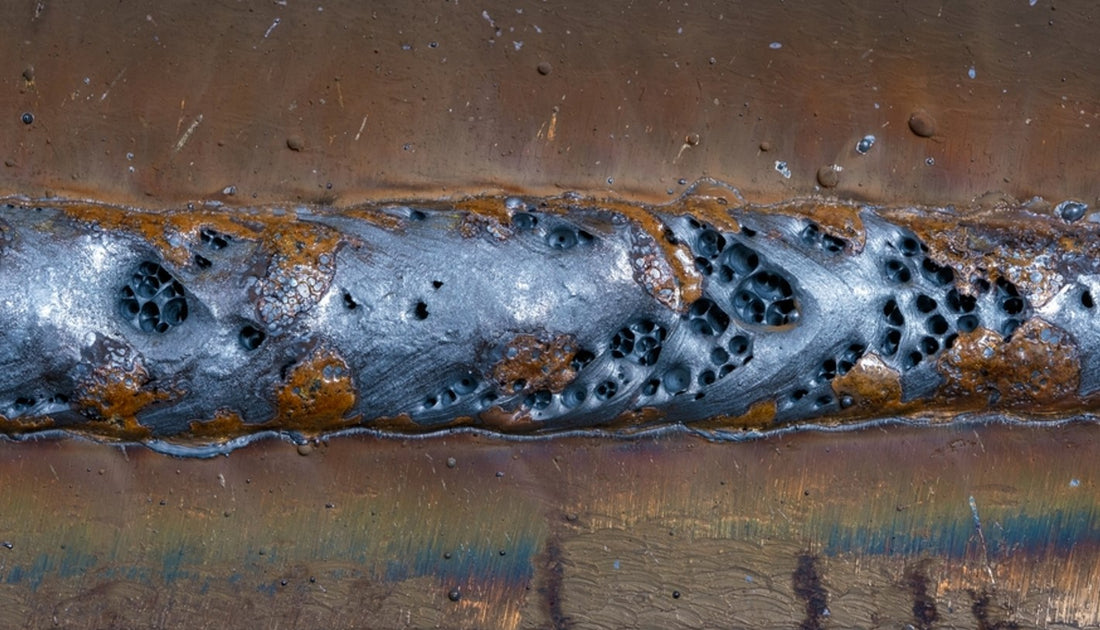Comprehending What is Porosity in Welding: Causes and Solutions
Comprehending What is Porosity in Welding: Causes and Solutions
Blog Article
Unwinding the Mystery of Porosity in Welding: Tips for Lessening Issues and Optimizing Quality
In the elaborate world of welding, porosity remains a relentless obstacle that can significantly impact the quality and honesty of welded joints. As we dive into the midsts of porosity in welding, uncovering the tricks to its prevention and control will be critical for experts looking for to master the art of top quality weldments.
Understanding Porosity in Welding
Porosity in welding, an usual problem experienced by welders, refers to the visibility of gas pockets or spaces in the bonded material, which can jeopardize the stability and top quality of the weld. These gas pockets are commonly caught during the welding process because of numerous factors such as incorrect shielding gas, infected base products, or incorrect welding criteria. The development of porosity can damage the weld, making it susceptible to splitting and rust, eventually resulting in architectural failures.
Understanding the origin creates of porosity is crucial for welders to properly avoid its incident. By acknowledging the value of maintaining correct gas shielding, guaranteeing the cleanliness of base materials, and optimizing welding settings, welders can dramatically lower the likelihood of porosity formation. Additionally, utilizing methods like pre-heating the base product, employing appropriate welding strategies, and carrying out complete examinations post-welding can better help in minimizing porosity problems. Generally, a thorough understanding of porosity in welding is crucial for welders to create high-quality and resilient welds.

Common Reasons For Porosity
When inspecting welding procedures for prospective quality concerns, comprehending the typical causes of porosity is vital for preserving weld integrity and preventing structural failures. Porosity, characterized by the existence of dental caries or gaps in the weld steel, can dramatically jeopardize the mechanical residential or commercial properties of a bonded joint. One common source of porosity is improper protecting gas protection. Insufficient shielding gas flow prices or inappropriate gas blends can bring about atmospheric contamination, resulting in porosity development.
In addition, welding at improper criteria, such as exceedingly high travel speeds or currents, can produce excessive disturbance in the weld swimming pool, trapping gases and creating porosity. By addressing these common reasons via appropriate gas shielding, material preparation, and adherence to ideal welding criteria, welders can reduce porosity and enhance the top quality of their welds.
Methods for Porosity Avoidance
Executing reliable precautionary steps is vital in decreasing the occurrence of porosity in welding procedures. One method for porosity prevention is making sure correct cleaning of the base steel before welding. Impurities such as oil, oil, corrosion, and paint can cause porosity, so complete cleansing using suitable solvents or mechanical top article methods is crucial.

One more secret preventive procedure is the selection of the ideal welding consumables. Utilizing top notch filler materials and protecting gases that appropriate for the base steel and welding process can dramatically reduce the danger of porosity. Additionally, maintaining proper welding criteria, such as voltage, present, take a trip rate, and gas circulation price, is vital for porosity avoidance. Drifting from the suggested settings can lead to incorrect gas protection and poor fusion, bring about porosity.
Moreover, employing correct find here welding methods, such as maintaining a constant traveling rate, electrode angle, and arc size, can assist stop porosity (What is Porosity). Sufficient training of welders to ensure they comply with finest practices and high quality control procedures is also crucial in minimizing porosity issues in welding

Finest Practices for High Quality Welds
One trick technique is preserving appropriate tidiness in the welding area. Thoroughly cleaning the workpiece and bordering area prior to welding can assist mitigate these issues.
One more ideal practice is to very carefully pick the suitable welding criteria for the certain products being joined. This includes establishing the appropriate voltage, existing, take a trip speed, and shielding gas circulation price. Correct specification selection makes certain ideal weld penetration, blend, and general top quality. Using top notch welding consumables, such as electrodes and filler steels, can substantially impact the last weld high quality. Buying premium consumables can cause more powerful, a lot more durable welds with less problems. By following these finest methods, welders can consistently produce premium welds that satisfy industry criteria and surpass customer assumptions.
Significance of Porosity Control
Porosity control plays a vital function in making certain the honesty and quality of welding joints. Porosity, characterized by the visibility of tooth cavities or voids within the weld steel, can dramatically jeopardize the mechanical buildings and architectural integrity of the weld. Too much porosity damages the weld, making it extra vulnerable to cracking, deterioration, and overall failing under operational loads.
Efficient porosity control is important for preserving the preferred mechanical residential properties, such as toughness, ductility, and strength, of the welded joint. What is Porosity. By reducing porosity, welders can enhance the total quality and reliability of the weld, making sure that it meets find more the efficiency needs of the intended application
Moreover, porosity control is important for attaining the preferred visual look of the weld. Excessive porosity not only deteriorates the weld yet also detracts from its visual charm, which can be important in markets where visual appeals are essential. Appropriate porosity control methods, such as utilizing the right shielding gas, regulating the welding specifications, and making certain correct cleanliness of the base materials, are crucial for creating top notch welds with very little defects.

Conclusion
Finally, porosity in welding is an usual defect that can jeopardize the quality of the weld. By understanding the root causes of porosity and implementing appropriate prevention methods, welders can minimize issues and achieve better welds. It is important to regulate porosity in welding to make sure the stability and toughness of the last product. Implementing best methods for porosity control is crucial for accomplishing optimum welding outcomes.
Report this page